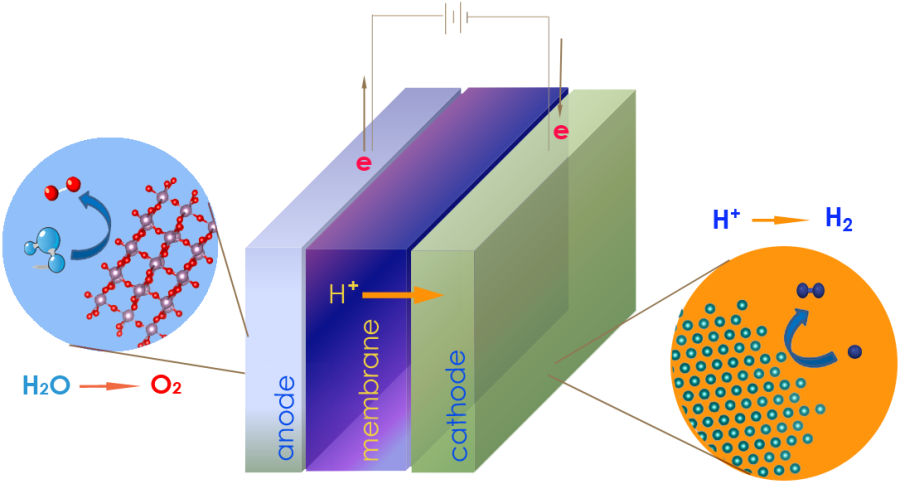Electrocatalysis
Green electricity for a CO2 neutral economy
Green electricity has popped-up as a renewable energy source in the past decade and presents a key solution towards a CO2 neutral economy. While today mostly stored in batteries, electricity needs to be more-and-more converted into synthetic fuels for their use as transportation resources with high energy density. By water splitting, for example, electricity is used for H2 production at a metal electrode of an electrochemical cell, after which H2 can be used as building block in tandem with CO2 for fuel generation.
Research for water splitting technology at CoCooN
Yet, widespread implementation of water splitting technology is impeded by the high cost of operation of electrochemical processes. This required novel and innovative processes, materials and technologies to be discovered. To this end, the COCOON research group aims at using atomic layer deposition (ALD) for the deposition of thin films with atomically precise control of the surface properties (composition and morphology). Particularly, our aim is the controlled deposition of tailored metallic nanoparticles on electrode surfaces via ALD and investigate the impact of the composition, shape, size and coverage of the nanoparticles on the electrochemical conversion of water.
Publications and literature:
Rongé, Jan, et al. “Bifunctional Earth-Abundant Phosphate/Phosphide Catalysts Prepared via Atomic Layer Deposition for Electrocatalytic Water Splitting.” NANOSCALE ADVANCES, vol. 1, no. 10, 2019, pp. 4166–72. DOI: 10.1039/c9na00391f
Mistry, Hemma, et al. “Nanostructured electrocatalysts with tunable activity and selectivity.” NATURE REVIEWS MATERIALS, vol. 1, issue 4, art. no. 16009 (2016). DOI: 10.1038/natrevmats.2016.9
